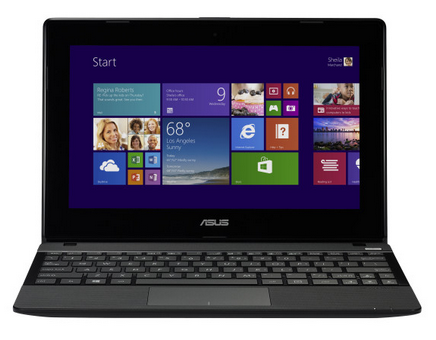Microsoft chops Windows 8 price for low-end device makers: Report

There has been talk that Microsoft was considering chopping the price it charges OEMs for Windows, and now, according to a February 21 Bloomberg News report, Microsoft is making that move -- at least for low-end devices.

Bloomberg, citing unnamed sources, said Microsoft is dropping the price it is charging OEMs for Windows 8 from $50 a copy to $15 a copy. The price cut seemingly only applies to machines that are priced at $250 or less at retail. It's not clear from the report when this pricing change will take effect.
There aren't a whole lot of Windows 8 PCs or tablets that cost $250 or less right now -- at least here in the U.S. Perusing the online Microsoft Store, I only found one: The ASUS X102BA-BH41T Touchscreen Laptop, which has been discounted to $249 from its original price of $399. On Amazon.com, the 8-inch Dell Venue 8 Pro 32 GB tablet is listed at $249, also discounted from its original $299. That said, the low end of the consumer market is where Microsoft is most vulnerable to competition from Android and Chrome OS-based devices.
Microsoft is expected to overhaul its Windows SKUs by the spring of 2015, which is its target release date for the next major version of Windows, codenamed "Threshold" (and likely to be labeled Windows 9 at launch). According to my sources, Microsoft is planning to make three primary Windows Threshold SKUs available: A low end "modern" consumer SKU for Windows Phones, ARM-based Windows tablets/PCs, phablets and other kinds of tablets; a more traditional consumer SKU that would likely run legacy Win32 apps; and a traditional enterprise SKU for business users that would support legacy Win32 apps and be updated less frequently than the other two.
I'd think it would be devices in "modern" SKU territory that would be Microsoft's target for a cheaper OEM version of Windows. The Verge previously reported that Microsoft might go so far as to make this SKU free to PC/tablet/phone OEMs.
Microsoft has been criticized by PC makers for decades for its OEM Windows pricing. In the past, Microsoft has charged OEMs more than $100 a piece for Windows, but provided PC makers ways to reduce that cost via marketing agreement concessions. OEMs who agreed to preload Windows on at least half of their PCs each month; to display the Windows logo prominently; and/or to promote Windows in their press releases got discounts. Volume also mattered (and to a large extent, still does), with PC makers moving the largest number of Windows machines granted a tier-one rate. Many of these practices got Microsoft in legal hot water -- see U.S. DOJ vs. Microsoft -- and resulted in Microsoft leveling the OEM playing field around pricing to a large extent.
I wouldn't be surprised if Microsoft plans to and/or has already started cutting Windows OEM pricing for low-end devices, as Microsoft's OEM revenues from Windows on cheaper consumer PCs and tablets has been on the decline. (Its share on more expensive business PCs has held up better, as company officials have noted during recent earnings call reports.)
The part of this equation in which I'm most interested is how the Softies plan to make up for reduced operating system licensing revenues.
Patent-licensing is one place where Microsoft is counting on increased, sustainable revenues. Microsoft is believed to be earning in excess of $1 billion a year from its growing number of patent agreements with companies making Android and Chrome OS devices. I'd think Microsoft also will be looking to service-subscription sales from users for Office on iPhones, Macs, Android phones and -- if my sources are right -- the iPad, as another offsetting revenue source.
Anyone else see other places Microsoft might try to exact more money from OEMs and/or consumers to take up the OS licensing slack?